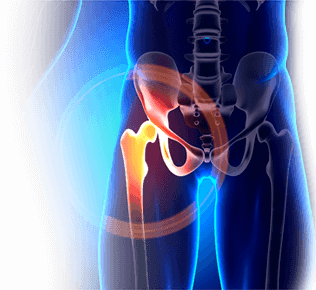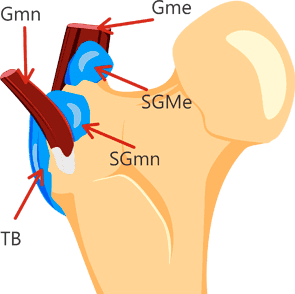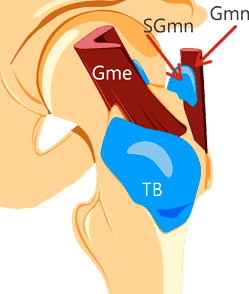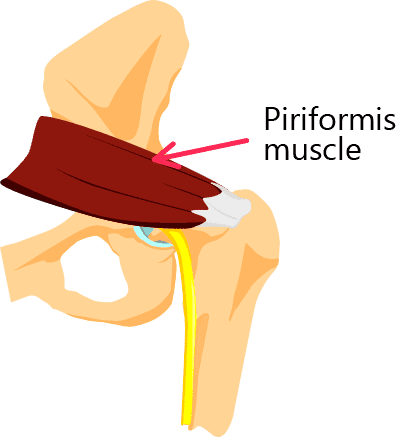The largest and deepest joint in the body, the hip joint is second only to the shoulder in its scope and complexity. Unlike the shoulder, however, it’s extraordinary stable. While it has a slightly more limited range of motion, it compensates by being one of the sturdiest structures in the body. This sturdiness is crucial, as the hip supports the weight of much of the rest of the body.
The hip is a ball-and-socket joint, a joint formed by the convergence of the rounded end of one bone with the cup-like depression of another. In this case, the end of the femur (the thigh bone) fits into a large concave depression known as the acetabulum. The end of the femur (or femoral head) and acetabulum are covered with articular cartilage, a white, rubbery substance that absorbs shock and allows the joints to rub together without damaging the bones. This cartilage is especially thick in the back part of the socket that’s subjected to the most pressures during movements like running and walking. Deterioration of the articular cartilage, normally as a result of aging, can result in hip osteoarthritis and shooting hip pain.
The hip is a meeting place for a large number of the body’s muscles, which are generally categorized into four separate groups according to their functions. Abductors help to pull the legs away from the body, while adductors pull it towards the body. The flexor muscles, which assist the hip in flexing, include the quadriceps and iliopsoas muscles. A fourth group, the extensor muscles, includes the hamstrings, which are responsible for extension. The hamstrings and quadriceps work in tension to make activities like running and walking possible. Notably, the piriformis muscle, located in the buttocks region, can impinge on the sciatic nerve, the largest of the body’s nerves, and induce piriformis pain in hip.





































































